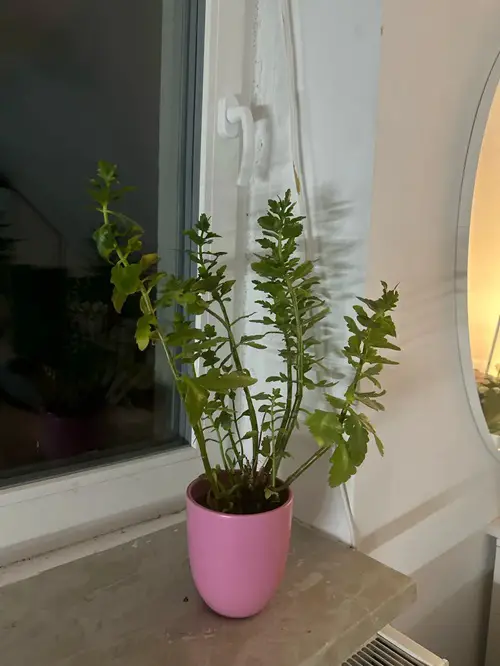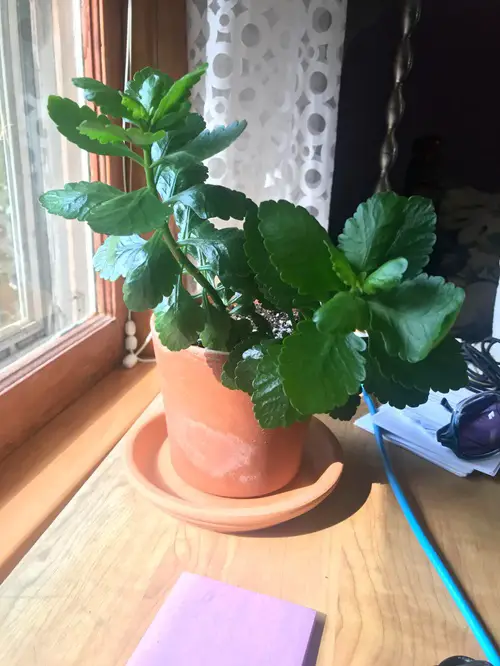Discover why your Kalanchoe isn’t blooming this winter and learn these simple tricks to encourage its gorgeous flowers!

Kalanchoes are one of the most popular flowering succulents among gardeners worldwide as they can flourish well in both indoor and outdoor spaces. However, due to some issues, these cheerful plants fail to produce blooms in the winter season. Let’s find the reasons and solutions in this article!
Why Is Your Kalanchoe Not Blooming?
There are several reasons why your Kalanchoe is not able to bloom properly. Basically, all these issues can be dealt with by taking appropriate measures like simply changing the position to make lighting conditions good or sometimes holding back on watering also helps in many ways.
1. Insufficient Lighting Conditions

Generally, Kalanchoes thrive in bright, indirect sunlight. If your plant isn’t blooming, it may not be getting enough light to produce the energy required for flowering. Check if the spot is too dark or shaded, and try to shift it to a brighter place.
To promote healthy blooms, keep your plant on a sunny windowsill where it can get at least 6-8 hours of light every day. However, do not expose it to harsh direct sunlight to prevent sunburn on its foliage.
2. Improper Day Length

Kalanchoe is a short-day plant that requires long nights (dark periods) to form buds. If it is exposed to too much artificial light at night, the natural cycle disrupts, and the plant may fail to bloom.
You can try to mimic its natural habitat by providing 12-14 hours of complete darkness daily for 4-6 weeks during the bud formation period. Either cover the plant with a cardboard box or move it to a dark room during the evening to simulate the right conditions until the buds start to bloom.
3. Overwatering

Excess water is the most common culprit that prevents not only Kalanchoe but many plants from blooming. Overwatering can lead to root rot and fungal infections, which stress the plant and halt its flower production. Since these succulents don’t prefer to grow in moist conditions, you need to let the top inch layer of the soil dry out before watering.
In winter, when the plant’s growth slows, reduce watering frequency even further and use a porous soil mix to avoid waterlogging and prevent root rot.
4. Nutrient Deficiency

This plant needs a balanced fertilizer, so feeding it with a phosphorus-rich fertilizer, every 4-6 weeks can encourage more flowering. Moreover, it is always necessary to provide your plant with a sufficient nutrient supply during its active blooming period.
Otherwise, your Kalanchoe may grow lush leaves but fail to produce flowers. However, avoid over-fertilizing during the winter months, as too much nitrogen can promote foliage growth at the expense of blooms.
5. Temperature Stress

Kalanchoe prefers to grow in moderate temperatures ranging between 45°F-65°F at night and 50°F-70°F during the day. So, during the active blooming period, if it is exposed to extreme cold or hot drafts then the stress affects the ability to bloom.
So, try to maintain a stable temperature and humidity level indoors to help the plant focus its energy on producing vibrant flowers. Also, ensure you avoid frequent temperature fluctuation near the plant; place it away from radiators, air conditioners, or drafty windows.
6. Failure in Deadheading!

After Kalanchoe flowers fade away or wilt off, it is necessary to deadhead those dried blooms to promote bud formation. If it is not done regularly then leaving the dead blooms can inhibit future flower production.
Pruning these spent flowers signals the plant to focus its energy on forming new blooms instead of maintaining old ones. Also, regular pruning makes the plant look tidy and encourages good compact growth.
Tips to Encourage Blooming
1. Provide the Right Light
Kalanchoes thrive in bright, indirect sunlight. Place your plant in a location where it receives at least 6-8 hours of light daily. If natural sunlight is insufficient in your area, especially in winter, why not use the privilege of LED grow lights?
Grow lights are a great alternative to ensure the plant gets adequate brightness for generating the energy to produce continuous blooms.
Caution: Avoid harsh direct sunlight to prevent leaf burn.
2. A Bloom-Inducing Dark Cycle

As a short-day plant, it needs 12-14 hours of complete darkness each night for 4-6 weeks to trigger blooming. During this period, cover the plant with a box or place it in a dark room during the evening to simulate natural cycles.
3. Prune and Deadhead Regularly

Prune your Kalanchoe after the blooms fade by removing spent flowers and leggy stems. This practice directs the plant’s energy toward creating new buds instead of maintaining old or dead parts.
4. Optimize Watering Routine

As mentioned earlier, Kalanchoes tend to thrive in dry soil conditions. So, always use the rule of thumb by checking the top inch layer of the soil with your finger to see if it is completely dry or not. If it is, only then pour water in!
5. Feed with Balanced Fertilizer

Fertilize your Kalanchoe with a phosphorus-rich fertilizer every 4-6 weeks during its growing period. Phosphorus supports bud and flower development.
Caution: Don’t use fertilizers high in nitrogen during blooming cycles, as they encourage foliage growth at the expense of flowers.
6. Repot When Necessary

If your Kalanchoe has outgrown its pot or the soil has compacted, repot it in the fresh succulent soil mix after the active blooming period. A healthy root system in a well-draining soil medium can support better flowering.
Lastly, do not repot it during the plant’s blooming cycle, as it can interrupt flower production.
And yes, do note that Kalanchoes are toxic to pets and humans if ingested. So, keep them out of reach of children and animals. Well, hoping this guide will help you with your Kalanchoe gardening. Wishing you happy blooms this season. Do let us know if you like our plant care guides!








